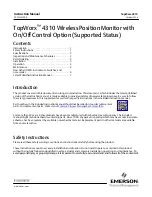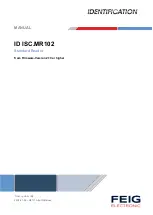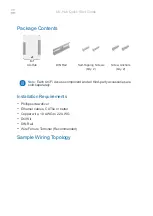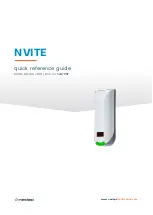
Instruction Manual
D103622X0KR
TopWorx 4310
October 2016
5
D
To avoid personal injury, always wear protective gloves, clothing, and eyewear.
D
Provide some temporary measure of control to the process before taking the instrument out of service.
D
Provide a means of containing the process fluid before removing any measurement devices from the process.
D
Disconnect any operating lines providing air pressure, electric power, or a control signal to the actuator. Be sure the
actuator cannot suddenly open or close the valve.
D
Use bypass valves or completely shut off the process to isolate the valve from process pressure. Relieve process pressure
from both sides of the valve.
D
Vent the pneumatic actuator loading pressure and relieve any actuator spring precompression so the actuator is not
applying force to the valve stem; this will allow for the safe removal of the stem connector.
D
Personal injury or property damage may result from fire or explosion if natural gas or other flammable or hazardous gas
is used as the supply medium and preventive measures are not taken. Preventive measures may include, but are not
limited to: Remote venting of the unit, re‐evaluating the hazardous area classification, ensuring adequate ventilation,
and the removal of any ignition sources. For information on remote venting of this instrument, refer to the Installation
section.
D
Use lock‐out procedures to be sure that the above measures stay in effect while you work on the equipment.
D
The valve packing box might contain process fluids that are pressurized,
even when the valve has been removed from the
pipeline.
Process fluids might spray out under pressure when removing the packing hardware or packing rings, or when
loosening the packing box pipe plug. Cautiously remove parts so that fluid escapes slowly and safely.
D
Check with your process or safety engineer for any additional measures that must be taken to protect against process
media.
D
On an explosion‐proof instrument, remove the electrical power before removing the instrument covers in a hazardous
area. Personal injury or property damage may result from fire and explosion if power is applied to the instrument with
the covers removed.
Instruments Mounted on Tank or Cage
WARNING
For instruments mounted on a tank or displacer cage, release trapped pressure from the tank and lower the liquid level to a
point below the connection. This precaution is necessary to avoid personal injury from contact with the process fluid.
Instruments With a Hollow Displacer or Float
WARNING
For instruments with a hollow liquid level displacer, the displacer might retain process fluid or pressure. Personal injury
and property might result from sudden release of this pressure or fluid. Contact with hazardous fluid, fire, or explosion can
be caused by puncturing, heating, or repairing a displacer that is retaining process pressure or fluid. This danger may not
be readily apparent when disassembling the sensor or removing the displacer. A displacer that has been penetrated by
process pressure or fluid might contain:
D
pressure as a result of being in a pressurized vessel
D
liquid that becomes pressurized due to a change in temperature
D
liquid that is flammable, hazardous or corrosive.
Handle the displacer with care. Consider the characteristics of the specific process liquid in use.
Before removing the
displacer, observe the appropriate warnings provided in the sensor instruction manual.





































